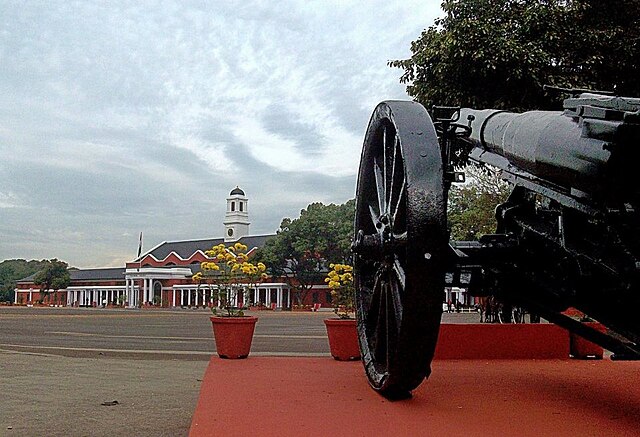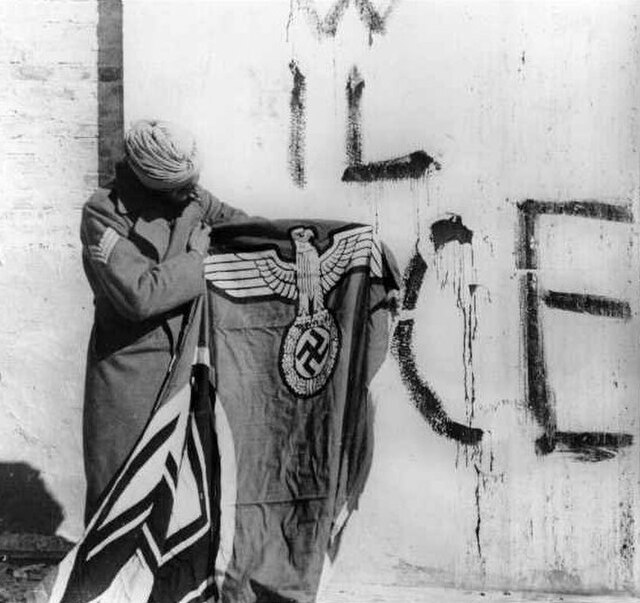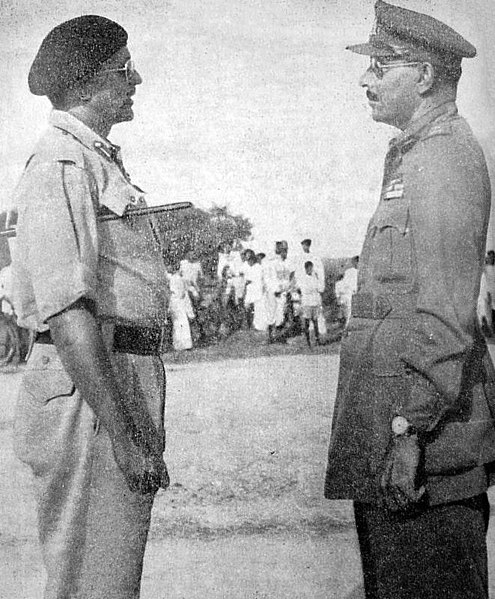The Indian Military Academy (IMA) is one of the oldest military academies in India, and trains officers for the Indian Army. Located in Dehradun, Uttarakhand, it was established in 1932 following a recommendation by a military committee set up under the chairmanship of General Sir Philip Chetwode. From a class of 40 male cadets in 1932, IMA now has a sanctioned capacity of 1,650. Cadets undergo a training course varying between 3 and 16 months depending on entry criteria. On completion of the course at IMA cadets are permanently commissioned into the army as Lieutenants.
The main ground of IMA with Chetwode Hall and drill square
Aerial view of the academy in 1932.
Then General Sir Philip Chetwode. He was promoted Field Marshal in February 1933.
The Prime Minister, Narendra Modi, signing the visitors' book at the War Memorial in Indian Military Academy.
The Indian Army is the land-based branch and largest component of the Indian Armed Forces. The President of India is the Supreme Commander of the Indian Army, and its professional head is the Chief of Army Staff (COAS). The Indian Army was established on 1 April 1895 alongside the long established presidency armies of the East India Company, which too were absorbed into it in 1903. Some princely states maintained their own armies which formed the Imperial Service Troops which, along with the Indian Army formed the land component of the Armed Forces of the Crown of India, responsible for the defence of the Indian Empire. The Imperial Service Troops were merged into the Indian Army after independence. The units and regiments of the Indian Army have diverse histories and have participated in several battles and campaigns around the world, earning many battle and theatre honours before and after Independence.

No. 4 (Hazara) Mountain Battery with RML7 pounder "Steel Gun" Mountain Gun in Review Order. Left to right Naick, Havaldar, Subadar (Sikhs) and Gunner (Punjabi Musalman) c. 1895.
Indian Cavalry on the Western Front during World War I.
A Sikh soldier of the 4th Division (the Red Eagles) of the Indian Army, attached to the British Fifth Army in Italy. Holding a captured Nazi flag after the surrender of German forces in Italy, May 1945. Behind him, a fascist inscription says "VIVA IL DUCE", "Long live the Duce" (i.e. Mussolini).
Major General El Edroos (at right) offers his surrender of the Hyderabad State Forces to Major General (later Army Chief) J.N. Chaudhuri at Secunderabad








